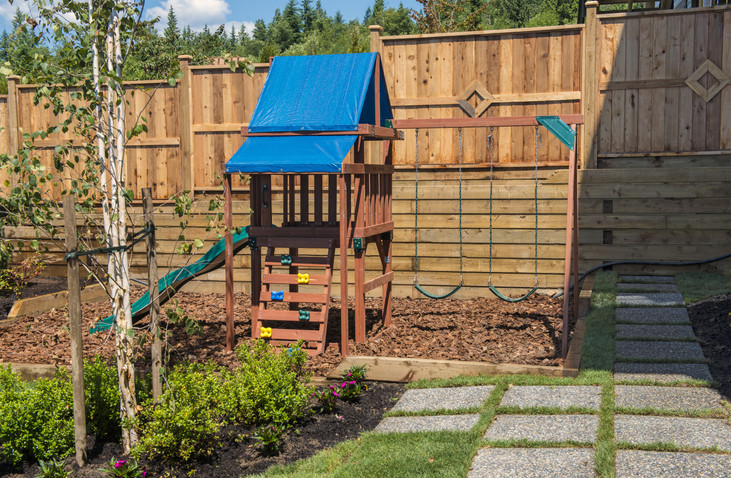Things to consider when creating a play area in your garden
POSTED ON 28 September 2022 BY NINGBO TEAM

If you’re thinking of building a play area for your children, it’s natural to want to get everything right. You want them to love it, so it’s worth taking the time to really think about what it’s going to be like so they can enjoy it for years to come. But creating a play area can feel like a daunting task at first - with so much to consider, it can be hard to know where to start.
Keep reading to learn our best recommendations and top tips for getting started on planning your new garden play area.
How to design a playground
The design stage is the ideal point in your play area project to get everything planned out so you know what you’re doing when you’re buying materials and equipment, preparing your garden and putting the play area together. If you’ve never designed a play area before, it may seem fairly straightforward - just set up a swing set and a climbing frame and you’re done, right?
Well, not exactly. While of course you could go down this route, there are much better designs you can employ to make the most of your garden area and provide your children with a play area they’ll really love. The first step is to look at your garden. Are there hills? Dips? Ponds? Trees? All of these can be incorporated into your play area to make it unique and special for your children to play in.
What playground equipment to choose
Once you’ve established what you’ve already got in your garden, it’s time to think about the things you’ll need to buy, starting with your playground equipment. While a tree may make a pretty good climbing frame, and a dip can be repurposed as a sand pit, you might need to buy purpose built swing sets or monkey bars.
This is an excellent time to think about the aesthetics of your play area. Do you want to build a natural playground that blends in with the rest of your garden, or would you prefer a bright and colourful play area to match your children’s vibrant personalities? This will inform the equipment you buy, so it’s important to make your decision before you get to the shopping stage.
How to make a playground safe
You know how it is. It’s all fun and games until somebody gets a bump or a bruise and then the waterworks start. Unfortunately, it’s an unavoidable part of outdoor play. What’s important is making sure your children don’t get more serious injuries while using their new play area, and this is something you can try to prevent.
Installing equipment correctly as per the instructions, assessing your design for potential hazards and choosing the right playground surface can all help to reduce the risk of your children hurting themselves seriously in your play area.
What is the best playground surface material?
When you come to decide on which surface to use for your outdoor play area, there are lots of things to consider. Safety, of course, is one of the most important factors, but here are some others you may wish to think about too:
- Cost (remembering to consider how long it will last before you need to replace it)
- How easy the surface is to install and maintain
- How the surface fits in with your chosen aesthetic
- The environmental impact of the surface material
- Whether there are any coincidental benefits to the material (such as weed suppression or helping your garden to drain away water)
Potential surfaces for your garden play area include wood or bark chippings, rubber chippings, natural grass and artificial turf.
How much bark do I need for a play area?
If you decide to build a wood chip play area, or if you go for a rubber chipping alternative, you’ll need to know the volume of chippings you need before you buy. They’re usually sold in bulk bags, so a small play area may only need one, while a larger play area may need several.
Calculating the right depth of chippings to use is very important when it comes to safety. Generally, the deeper you lay the chippings, the further your child can theoretically fall without being seriously injured. In real life, of course, it’s more complicated than that, but filling your playground surface material to the recommended depth can help to reduce the risk of bad injuries.
You’ll need to know the highest point your child may fall from. If this is up to two metres, you’ll likely need at least 150 millimetres of depth. If it’s up to four metres, a depth of 200 millimetres is more appropriate. If you’re at all uncertain about how deep your surface should be, ask the vendor, who should be able to advise you on the specific requirements of the surface you choose.
Once you know your depth, you should multiply the length of your play area by the width and the depth (making sure all of your measurements have been converted into metres). The resulting figure in cubic metres should be the volume of chippings you need. Always allow a buffer of around 10 to 20% on top of this figure to be safe.




